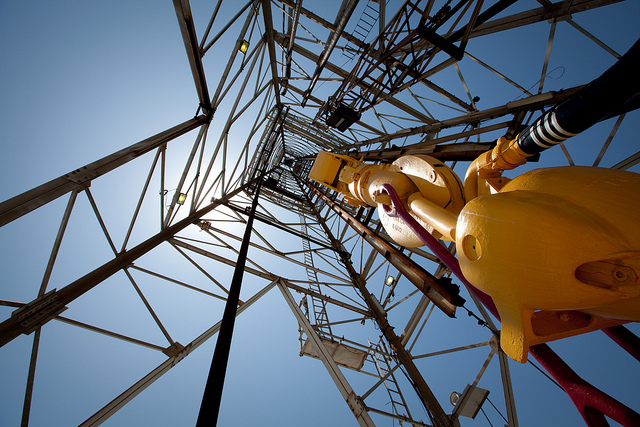November 2012, Vol. 239 No. 11
Features
E&P Activity Driving Deepwater GoM Revival

Deepwater Gulf of Mexico (GoM) is experiencing a strong resurgence of exploration and production activity and is well on its way toward reaching a “new equilibrium” in 2013 according to Wood Mackenzie’s latest upstream outlook.
Huge exploration success in the deepwater GoM over the 10 years preceding the April 2010 Macondo incident built a momentum that has been slowed, but not diminished in the two years succeeding it. Wood Mackenzie’s outlook underscores that the GoM is being defined by a high level of investment, a wide range of opportunities and the large number of explorers.
“The moratorium and exodus of several mobile offshore drilling units from deepwater GoM in 2010 sharply hindered drilling activity through 2011, but it has rebounded very well in 2012,” Lauren Payne, GoM Analyst for Upstream Research at Wood Mackenzie, told a news conference in Houston. The industry should finally get back to pre-Macondo production by 2014, she said.
“We expect this trend to continue, driven primarily by development drilling as operators seek to boost production levels and bring new projects onstream,” Payne said, adding “there are a lot of exciting times in deepwater GoM lying ahead.” Deepwater is defined as development in depths greater than 400 feet.
Wood Mackenzie emphasized that more than $20 billion will be spent drilling development wells for onstream projects alone through 2015. Subsea and facility spend will become bigger drivers as new projects like Jack/St Malo and Hadrian move forward in development. Together, these two categories represent $27 billion spent through 2015.
“Production has suffered in part because the low drilling levels in 2010/2011 could not mitigate natural decline, but we expect regional production to exceed 2009’s peak in 2018/2019 at 2 MMboe/d,” Payne said.
Production is expected to peak in 2019 at 2 million boed
For explorers, the deepwater GoM remains an attractive region and Wood Mackenzie expects it to remain a vibrant hub of activity in the long term. The volumes are there and terms are attractive enough to support continued activity, Payne said
“We expect more than $70 billion to be spent on exploration in the region by 2030, more than all the other key deepwater provinces combined,” said Julie Wilson, Senior Analyst for Wood Mackenzie’s Exploration Service.
From that investment, Wood Mackenzie expects more than 12 billion boe to found by 2030, creating about $30 billion of value. “These results are materially surpassed only by Brazil, which has enormous potential in its pre-salt play,” Wilson said.
What sets the GoM apart, and drives this high level of investment, is the wide range of opportunities available and the large number of explorers, according to Wood Mackenzie’s analysis. There are 46 operators in the deepwater in GoM, compared to just 15 in Angola/Brazil.
“Opportunities in this region range from small, low-risk prospects to giant targets in extreme conditions,” explained Wilson.
Wood Mackenzie emphasized that helping this wide array of operators is an above-ground environment that is still considered to be among the most attractive in the world, despite a changed regulatory environment that undoubtedly has created some uncertainties.
“Abundant infrastructure and an open, competitive environment allow smaller companies to create value from the more mature plays. Larger companies exploring for giant volumes must contend with remote, ultra-deep waters and reservoirs that are buried to extreme depths below thick salt layers that impede seismic imaging,” Wilson said.
Easy access to acreage, attractive fiscal terms, smaller sizes of production blocks, availability to participants and close proximity to one of the biggest refinery regions in the world make the deepwater GoM attractive for a wide variety of operators, Wilson said.
A well-developed pipeline system eases the process of getting products to the market. New trunklines and constructing lines into frontier areas should also drive more pipeline activity. Since no flaring is allowed in the GoM, there is added incentive for producers to tie into gathering lines.
Meanwhile, ample unused processing capacity in deepwater GoM could create significant value for hub owners and satellite operators alike if the right terms can be agreed.
“By 2017, up to 70% of deepwater GoM processing capacity will remain unused, although the available amount will be smaller due to technical and operational reasons,” said Norm Pokutylowicz, Analyst for Upstream Research at Wood Mackenzie.
“Demand for it will come in the form of infill development and tiebacks, while value will be derived either by operators monetizing their discovered resources or in the form of tariffs from third-party tie-backs,” he said.
Smaller independents operate about 20% of the platforms in the deepwater GoM and the tariffs they receive can be a significant source of revenue. As a result, they are working on ambitious development plants with much more activity likely.
According to Wood Mackenzie, an additional 2 billion boe of reserves are expected to be produced by subsea tie-backs from fields under development, probable developments and those yet to be discovered by 2017. By then, new third-party tiebacks are also expected to generate each year an extra $200 million in tariffs.
Wood Mackenzie stressed that there are still obstacles to achieving this outlook: capital, equipment, and personnel constraints in GoM and globally will affect project prioritization. Well times have increased 10% post-Macondo, this this is not expected to be a long-term trend.
“The recent lack of exploration drilling will impact long-term reserves replacement. In addition, the high-profile Paleogene play still faces substantial technological risks, in an ultra-deepwater environment with very poor reservoir qualities,” concluded Payne.
“That being said, we are well on our way to achieving this ‘new equilibrium’ in GoM in 2013 and the future of GoM from there is very bright.”





Comments